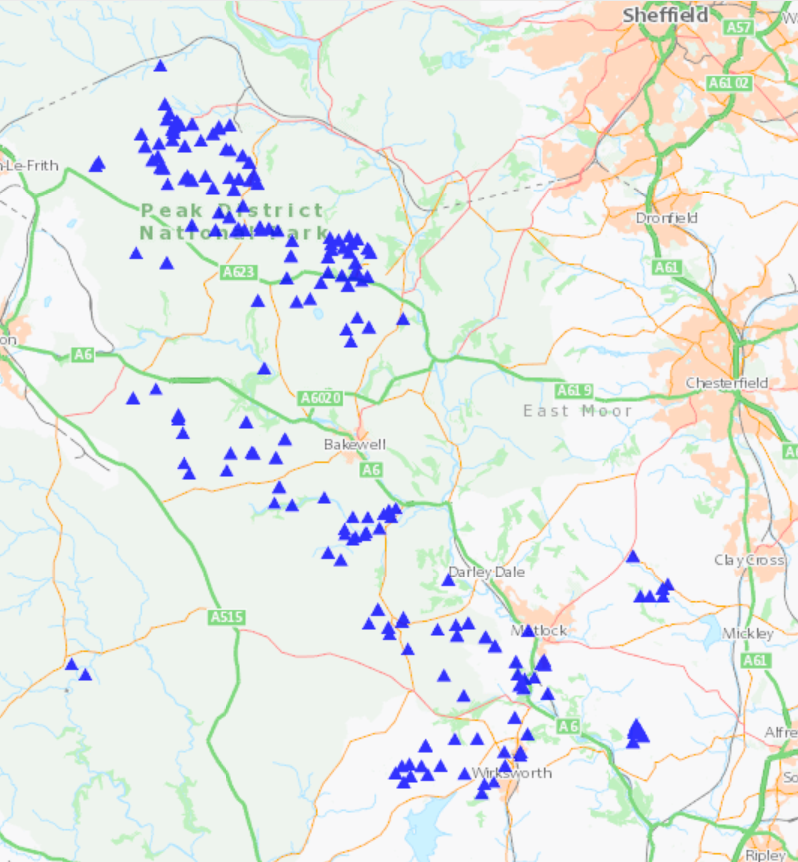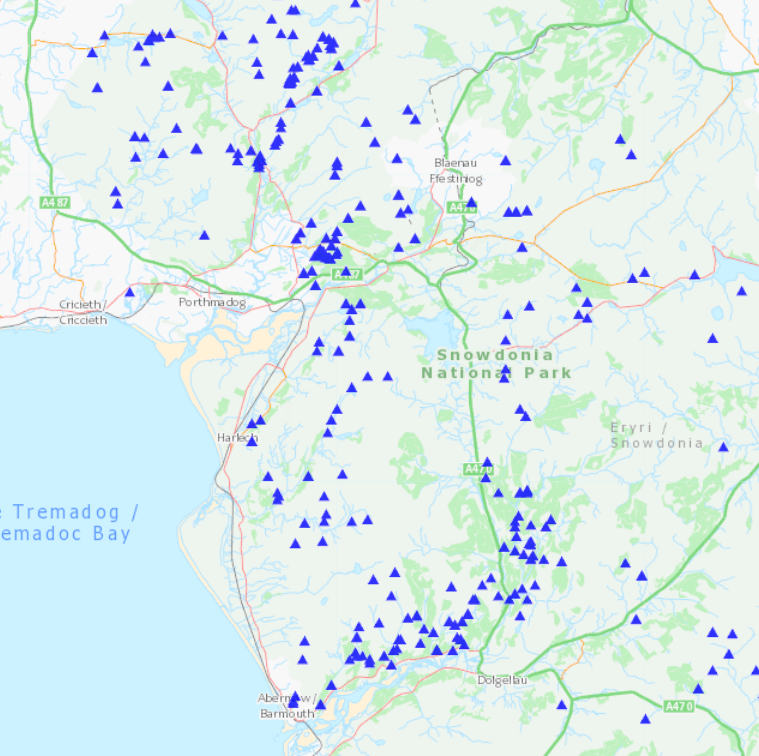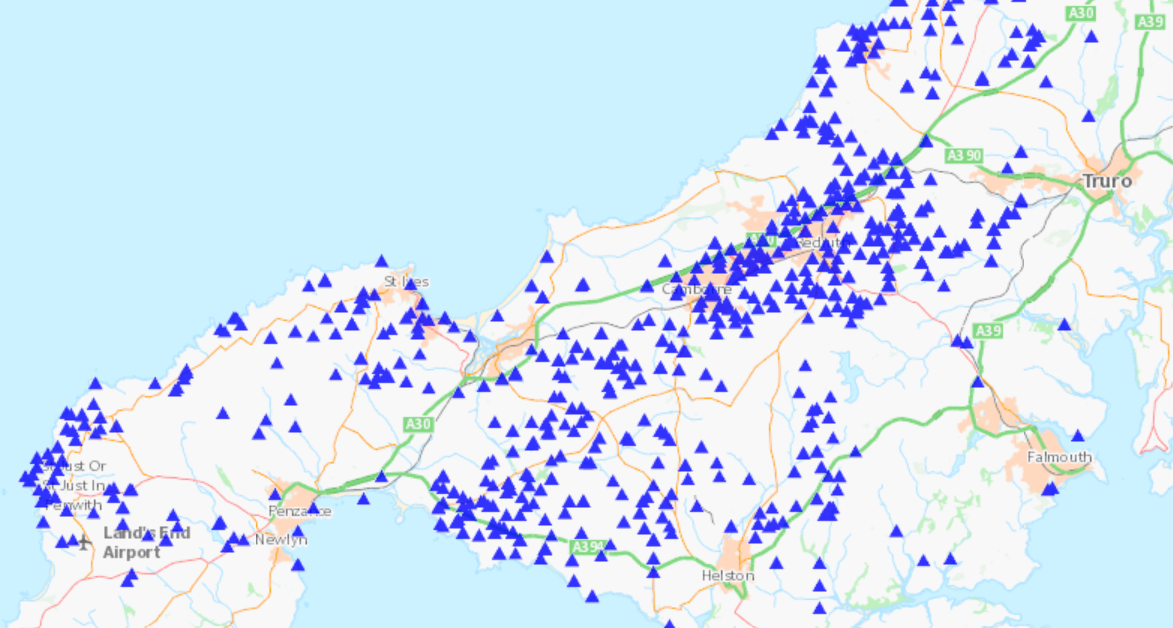As discussed in previous articles in this series, the complex and varied geological history of the UK has resulted in a wide range of resources which have been extensively exploited through mining. None more so than the long list of metals which have been extracted from our rocks since the Bronze Age (which gets its name from an alloy of two such metals; copper and tin).
The presence and accessibility of these metals was one of the reasons why the Romans invaded and settled in Britain, with most of the mined products exported and disseminated throughout the Roman Empire.
It is estimated that there are more than 70 metal elements found in rocks across the UK, some in the raw elemental state and others as the main constituent of ores. The best-known examples include iron, copper, tin, lead, zinc, gold and silver.
We covered the occurrence and mining of iron in a separate article earlier in this series (Mining Series Article 4: Ironstone Mining and Related Hazards in the UK), so here we will focus on other key metals listed above and some lesser-known examples such as arsenic, cobalt, and lithium.
Geology and Occurrence of Metals
Metals and their ores are typically formed through either magmatic, hydrothermal, metamorphic, sedimentary or placer processes. For example, hot magmatic or hydrothermal fluids penetrate surrounding rocks, sometimes interacting with them adding to metal concentrations, which then cool and crystallise out as metal rich veins. Sedimentary processes can also form concentrated ore deposits such as those associated with ironstone formations.
These processes have been commonplace throughout the geological history of the UK, and as such there are many areas with abundant metal resources including Scotland, Wales, Mendips, Pennines, Peak District and the South-West (Cornwall was the mining centre of the world during the 18th Century).
Mining and Uses of Metals
Copper & Tin have been mined in both Cornwall and Wales since the Bronze Age several thousand years ago. Early mining techniques involved the surface and shallow extraction of relatively pure copper and tin veins that ran along and through host rocks. Subsequent discovery of copper ores such as chalcopyrite and cuprite, and the main tin ore cassiterite, have allowed more widespread and traditional techniques to take place including underground mining to deep levels. Copper is good conductor and hence widely used in the production of wires and cables, while tin is widely used to produce alloys with other metals and as a polished protective surface.
Lead & Zinc have also been extensively mined since prehistoric times in locations across Britain including the Mendips, the Pennines, north and central Wales, and Cornwall. Mining and subsequent smelting of the main ores such as galena (lead sulphide) reached its peak during the industrial revolution where thousands of mine shafts were dug in the lead rich rocks especially in Yorkshire and Derbyshire. Lead was a popular product in paint, ceramics, pipes and plumbing materials, although less so now as its impact on the environment has become better understood.

Data from BGS showing metal deposits in and around the Peak District, mainly lead but also barium and zinc. British Geological Survey materials © UKRI 2024
Gold and Silver deposits have been found in older rocks across Britain, including Cornwall, Lake District, Pennines, and the Forest of Dean. However, the main areas associated with gold mining are north Wales and Central Scotland. The Clogau mine in north Wales was one of the largest and most productive. It is estimated to have produced over 165,000 tons of gold ore during its peak in the late 19th Century yielding 2,500 kg of gold. The mine is still in operation today although at a much smaller scale. Gold and silver are prized in society and culture, for example in jewellery and ornaments. However, they are also used in industry including medicine, dentistry, electronics and banking.

Data from BGS showing metal deposits in North Wales, including gold. British Geological Survey materials © UKRI 2024
Other metals that have historically been mined in the UK either in their elemental state or as an extract from an ore include:
- Arsenic was actively mined in Cornwall during the 19th century, and is used in pharmaceutical, agricultural and electronics industries.
- Antimony has been mined in both Wales and Scotland. It has multiple uses including in batteries, flame-retardant materials, paints, enamels, glass and pottery.
- Cobalt has been mined at various locations including Cheshire. It is the base of most medical implants and a key component in EV batteries.
- Lithium has been historically mined in Cornwall and is a key component in batteries, grease lubricants, and in heat-resistant glass and ceramics.
- Tungsten is primarily found in rocks in Devon, including the Drakelands Mine which is estimated to represent the 4th largest deposit in world. Uses include electrodes, filaments in light bulbs and cathode ray tubes. It is also used in heavy metal alloys from which cutting tools are made.
Mining Hazards and Risks for Landowners and Developers
The risks posed by historic mining of metals are similar to those discussed for the other resources earlier in this series. These include:
- Land Subsidence: The collapse of old mine workings and entries can cause ground subsidence, damaging buildings and infrastructure.
- Land Settlement: Where developments are proposed over former opencast sites which have been backfilled, there can be issues associated with settlement of buildings and infrastructure.
- Environmental: The risks to developers and landowners occur in the form of sediment and contaminant runoff from abandoned mines and mine waste material into water bodies, and contaminated residual mine waste materials. Many metals are toxic and can be dangerous to the environment once introduced into ecosystems. Lead is probably the most widely cited example, but all metals can impact the environment if released in sufficient quantities. There are a range of initiatives underway designed to reduce metal mine pollution, including the two referenced below:
- Innovative projects to reduce metal mine pollution complete
- Cleaning up rivers polluted by abandoned metal mines
If you have any development or construction projects that may be impacted by historical mining workings and hazards, then please get in touch to find out how we can help save both time and costs. Please use your main point of contact at GRM or for new enquiries email richard.upton@grm-uk.com or call 01283 551249.


